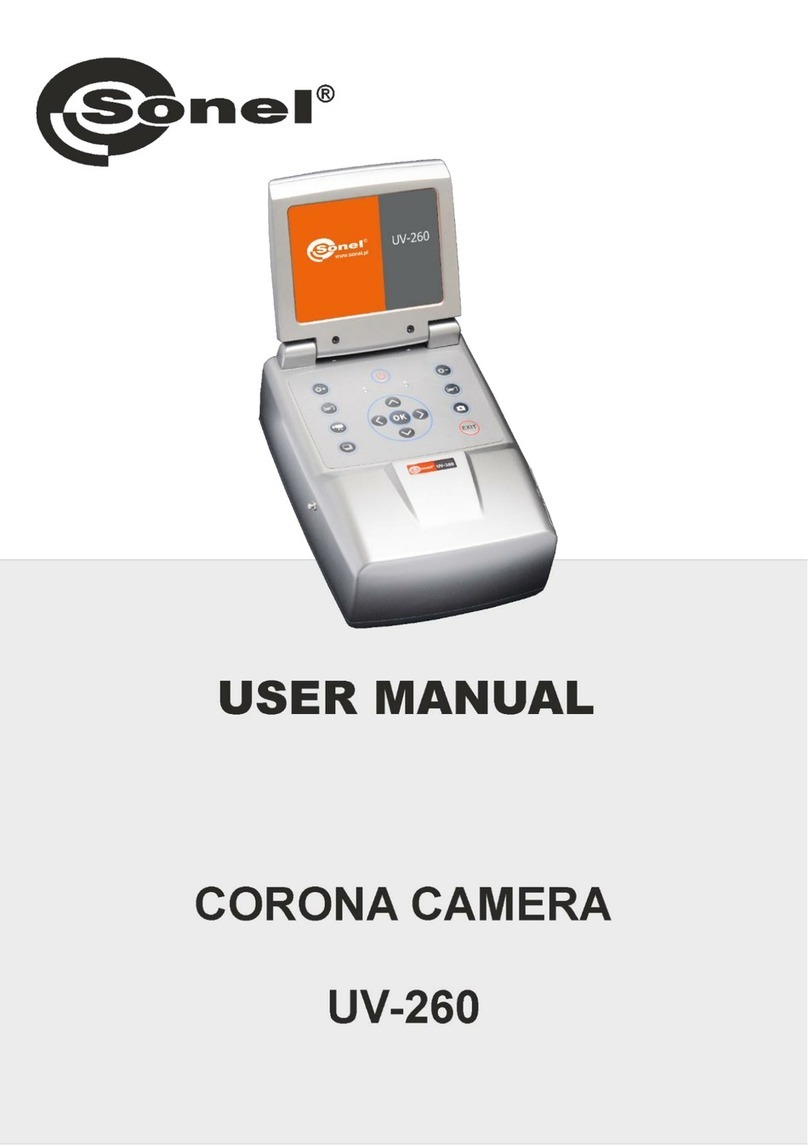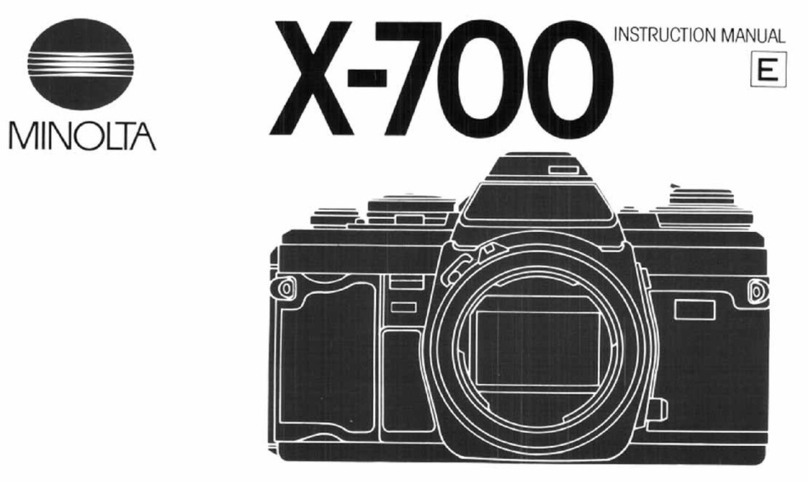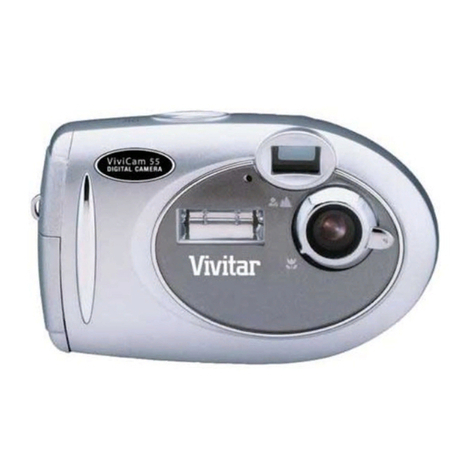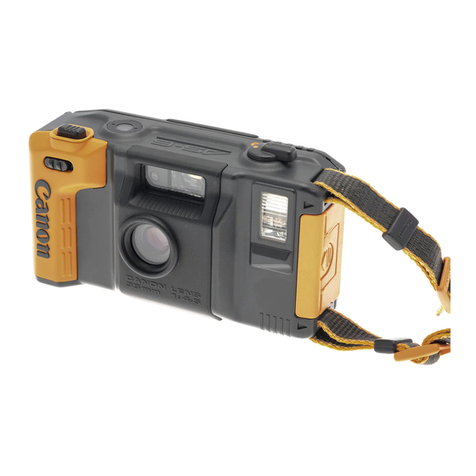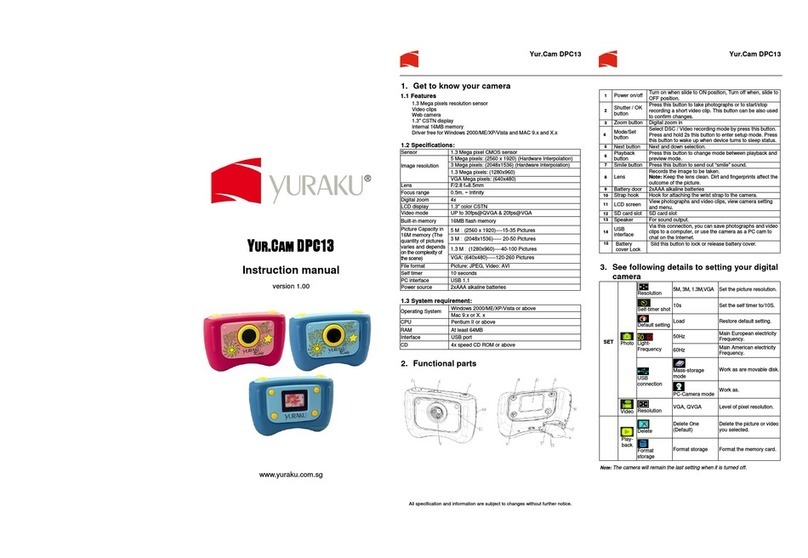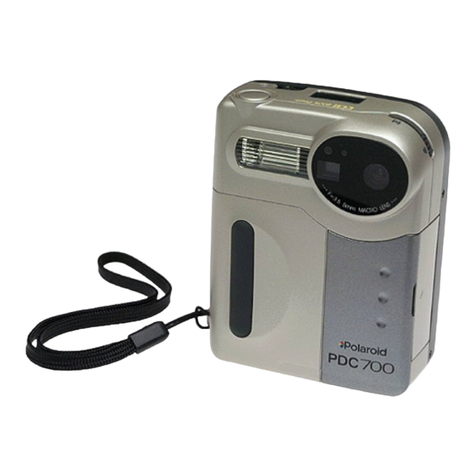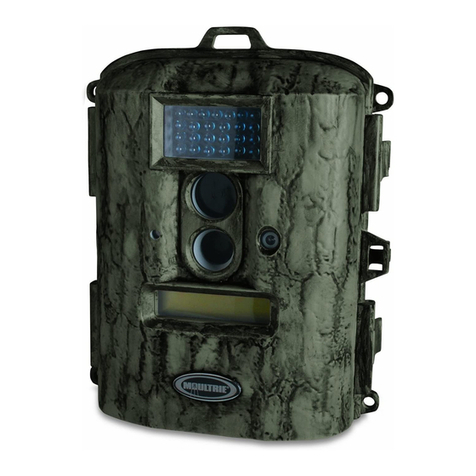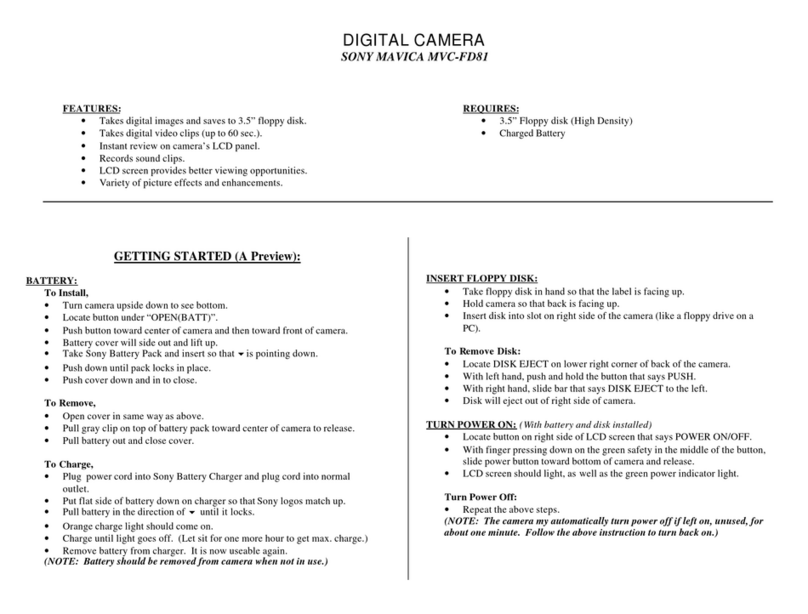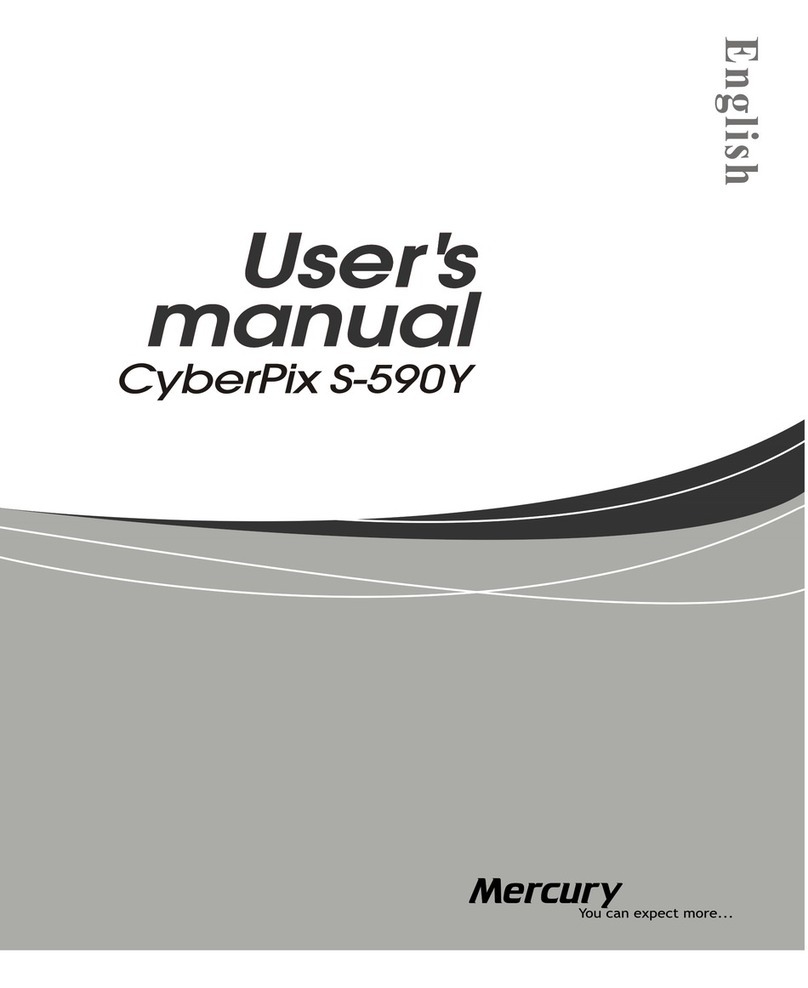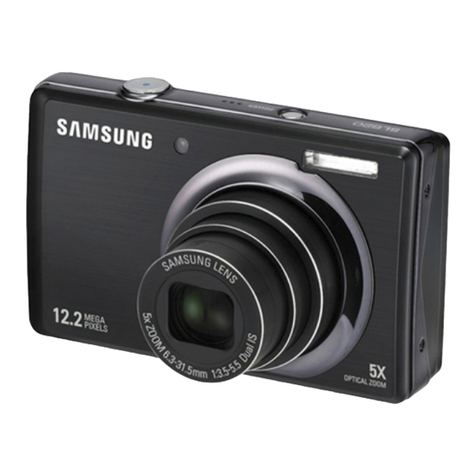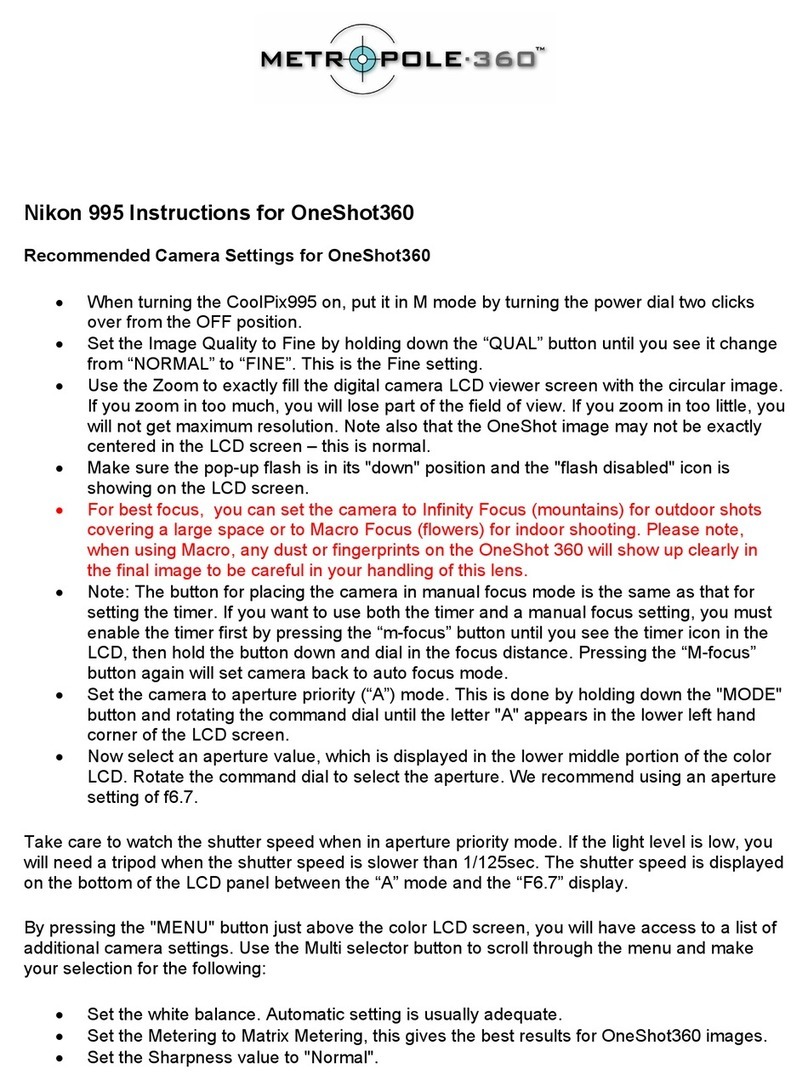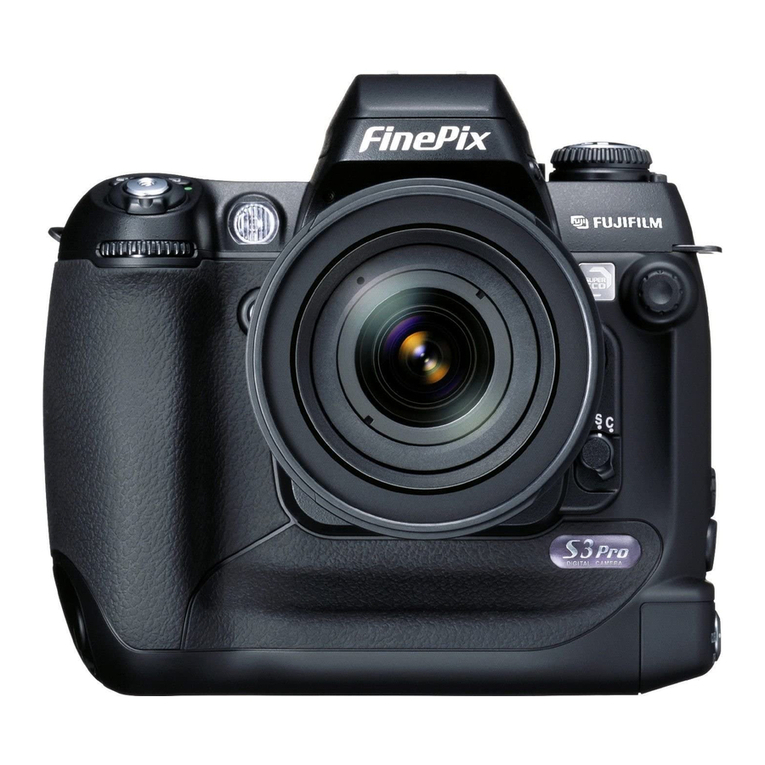Sonel UV-260 Corona Camera User manual


2

USER MANUAL
CORONA CAMERA
UV-260
SONEL S.A.
Wokulskiego 11
58-100 Świdnica
Version 1.03 17.12.2019

UV-260 –USER MANUAL
2
UV-260 Corona Camera is a device for detecting and precise locating corona discharge
occurring in devices under high voltage. It helps to locate and determine the power of a discharge,
basing on UV radiation released during corona discharge and providing a reliable way of technical
assessment of high voltage equipment.
The camera allows user to overlay recorded images of the corona onto the visible image.
Images are displayed in real time on a TFT screen. Displayed image may be stopped and saved as
a still image; observed discharge may be also recorded as a video file. Recorded images and
videos are stored on a removable SD card in a format compatible with personal computers.
Main features of UV-260:
high, adjustable UV sensitivity,
automatic or manual focus adjustment for real image and UV image
combining real images and UV images
automatic reduction of noise and interference,
5.7" TFT touch screen,
insensitivity to solar radiation during the operation,
UV discharge detection alarm,
built-in GPS system,
precise location of UV discharge sources,
recording discharges with real image in the form of photos or videos that may be played on a PC,
a program for generating reports -included in the set

UV-260 –USER MANUAL
3
CONTENTS
1. Introduction......................................................................................................5
2. Safety ................................................................................................................5
3. The principle of the operation........................................................................6
3.1. Electromagnetic radiation: visible, infra-red, ultraviolet............................................ 6
3.2. Mechanism of corona discharge.............................................................................. 7
3.3. Why corona discharge? ........................................................................................... 8
3.4. Detection of corona discharge ................................................................................. 8
4. Preparing the camera for operation.............................................................10
4.1. External design of the camera ................................................................................10
4.2. Mounting on a tripod...............................................................................................11
4.3. Moving the camera .................................................................................................12
5. Ports and buttons..........................................................................................13
5.1. External ports..........................................................................................................13
5.2. Layout and functions of buttons..............................................................................14
5.2.1. Navigation buttons.......................................................................................................14
5.2.2. Operating mode buttons..............................................................................................15
5.2.3. Control of power supply / charging and alarm - corona discharge indicator..................15
6. Operation and battery charging ...................................................................15
6.1. Inserting the battery................................................................................................15
6.2. Charging the battery ...............................................................................................16
6.3. Guidelines for using the battery ..............................................................................16
7. Working with UV-260 camera .......................................................................17
7.1. Operation of the buttons .........................................................................................18
7.1.1. Recording a video........................................................................................................18
7.1.2. Recording a static image.............................................................................................18
7.1.3. Switching the image mode...........................................................................................18
7.1.4. "Freezing" displayed image .........................................................................................18
7.1.5. Changing the focus mode............................................................................................18
7.1.6. Gain adjustment ..........................................................................................................19
7.1.7. Zoom...........................................................................................................................19
7.1.8. Manual focus...............................................................................................................19
7.1.9. Zooming in ..................................................................................................................19
7.1.10. Playing a voice note ....................................................................................................19
7.1.11. Zooming UV+ image .................................................................................................19
7.2. Operating the menu................................................................................................20
7.2.1. Main menu ..................................................................................................................20
7.2.2. Image Settings ............................................................................................................21
7.2.3. Video...........................................................................................................................22
7.2.4. Image..........................................................................................................................22
7.2.5. System........................................................................................................................22
7.2.6. Sub-menu "System Settings".......................................................................................23
8. "Sonel UV Analyse" software.......................................................................24
8.1. System Requirements.............................................................................................24
8.2. Software Operation.................................................................................................24

UV-260 –USER MANUAL
4
8.2.1. Starting-up Software....................................................................................................24
8.3. Software Operation.................................................................................................25
8.3.1. Main Function Area .....................................................................................................25
8.3.2. Toolbar........................................................................................................................26
8.3.3. Template Selection......................................................................................................26
8.3.4. Appearance Setting & Font Setting..............................................................................28
8.3.5. Cancel.........................................................................................................................28
8.3.6. Line.............................................................................................................................28
8.3.7. Edit Box.......................................................................................................................28
8.3.8. Add Pictures................................................................................................................28
8.3.9. Image Setup................................................................................................................30
8.3.10. Audio Play...................................................................................................................31
8.3.11. List box........................................................................................................................32
8.3.12. Vertical list...................................................................................................................33
8.3.13. Line Analysis...............................................................................................................33
8.3.14. Histogram....................................................................................................................34
8.3.15. Page Attribute..............................................................................................................35
8.3.16. Video Transmission.....................................................................................................35
9. Other information ..........................................................................................38
9.1. Cleaning and maintenance .....................................................................................38
9.2. Storage ...................................................................................................................38
9.3. Dismantling and Disposal........................................................................................38
9.4. Transport.................................................................................................................38
10.Technical specifications ...............................................................................39
11.Accessories....................................................................................................40
12.Manufacturer ..................................................................................................41

UV-260 –USER MANUAL
5
1. Introduction
Thank you for choosing UV-260 camera.
UV-260 Corona Camera is a modern, high-quality tool, easy and safe to use. To prevent errors
and problems while operating the device, carefully read this manual before the first use.
This manual contains three types of warnings that describe the possible risks both for the user
and the device. Information starting with word "WARNING" describe situations, which may
endanger user's life or health, when instructions are not followed. Word "CAUTION!" begins a
description of a situation, which may result in device damage, when instructions are not followed.
Indication of possible problems is preceded by word "Note".
The device has been designed, developed and manufactured in accordance with ISO 9001
quality systems.
We reserve the right to introduce changes that modernize the device.
Copyright of this manual and software are the property of Sonel SA
2. Safety
WARNING:
Do not attempt to open the device, as none of the components can be repaired or
calibrated by the user. Any maintenance activities may be carried out only by
authorized service personnel.
NOTE
Avoid strong shocks and stroking the device during its handling and transportation.
NOTE
Targeting the lens at objects that emit very high temperature (e.g. the sun), also when
switching the device ON/OFF may damage it.
NOTE
Never touch the lens. Dust accumulated on the lens may be removed only by using special
tools or compressed clean air.
The camera should be stored in cool, dry place, away from sources of strong electromagnetic
fields. When the camera is not used for a long time, remove the batteries.
During operation, the camera should be securely fastened, as all vibrations adversely affect the
accuracy.

UV-260 –USER MANUAL
6
WARNING:
Using the device with a damaged housing is a threat to the health and life of the user.
When working with the device, observe the technical conditions specified in this manual.
Damage to the camera, resulting from improper use, alteration and obvious negligence are not
covered by the guarantee.
3. The principle of the operation
Corona discharge is one of the three distinguished types of partial discharges i.e. breakdowns
caused by high voltage, which does not cause a short circuit. In addition to the corona discharge
(the least harmful of partial discharges), there are surface discharges, related mainly to
contaminated insulator surface and internal discharges caused by the degradation of the internal
insulation.
3.1. Electromagnetic radiation: visible, infra-red, ultraviolet
Individual types of electromagnetic radiation have wavelengths as shown in Figure 1.
Figure 1: Electromagnetic waves of different lengths.
Gamma Rays
X-Rays
,
Ultraviolet
Visible radiation
Infrared
Microwaves
Radio waves
Thermal camera
UV camera
,

UV-260 –USER MANUAL
7
3.2. Mechanism of corona discharge
Corona discharge is a current flow, usually in the air, from a discharge electrode which is under
high voltage.
High voltage is a source of air ionization, which creates plasma around the electrode - it is
ionized matter containing electrically charged particles. The resulting ions carry the load to places
of lower potential.
If the discharge electrode, which may be any object under high voltage, has a proper
"sharpened" shape, then a high potential gradient is generated around this part generates, which
may lead to a discharge. At very high voltage it may be a spark or arc - if a 'plasma channel' is
created. In contrast, corona discharge is formed when a voltage that causes ionization is too low at
the moment to create the plasma channel.
The discharge is invisible in daylight (in total darkness - rarely occurring in outdoor conditions -
it is hardly visible as a blue-violet afterglow), as most of the radiation generated is in the ultraviolet
range, invisible to human eye, and therefore, the development of UV radiation detectors causes
gradual replacement of acoustic-based detection methods with UV-based detectors.
Corona discharges generate the electromagnetic spectrum in the range of 200…405 nm; solar
radiation also contains (in addition to visible light) both infra-red and ultraviolet radiation. Using an
appropriate filter (wavelength range of 240…280 nm) suppress UV radiation generated by the sun,
so the camera may operate well in daylight without interference.
Fig. 2: The spectrum of corona discharge
Depending on the polarity of the discharge electrode, the corona discharge may be positive or
negative. In case of both negative and positive discharges, photons are the main source of
electrons. These photons are formed by induced atoms creating plasma, which return to lower
energy states, therefore the equipment is scaled in "UV photons."
Range filtered by the
camera
Solar radiation spectrum
Visible light
Ultraviolet
Wavelength (nm)

UV-260 –USER MANUAL
8
Positive discharge is homogeneous, as the majority of charges are concentrated close to the
electrode. Negative discharge at the same voltage takes a larger area, but because the energy is
spread over the wider area, it seems to be weaker and it may be difficult to locate.
In practice, controlled corona discharges, are used for example in industry to remove dust in
the gases, air, or to remove unwanted electric charges (even in household air ionizers). Charges
are generated on certain surfaces and this phenomena may be observed in many everyday items
e.g. a laser printer or photocopier.
3.3. Why corona discharge?
Unwanted corona discharge influence adversely the devices, where they occur, for example by
causing radio interference (often problems with the reception of radio signals near high voltage
power lines), or by causing a loss of energy (energy "escapes" to the air). The most adverse effect
of corona discharges, is the impact on the insulation elements, resulting in the need to disconnect
entire power transmission systems. Therefore, it is required to prevent corona discharges and
reduce them at their early stage, as the next stage results in creating an arc and permanent
damage.
Even the presence of small discharges in one place may cause adverse effects, because the
current flow and contamination generate corrosive substances, which deteriorate the condition of
insulators, enable the moisture access to the internal components and accelerate degradation.
Locating corona discharges is a useful cautionary measure, similarly to infra-red methods that help
to discover potential problems before they arise.
3.4. Detection of corona discharge
UV-260 detects and locates corona discharges by detecting the UV signal generated during the
discharge, then they can be counted to assess the level of discharge. In practice, the number of
discharges in a certain time is represented graphically - by so called 'UV image'. Precise overlay of
UV image on the real image provides an accurate and most importantly, safe (performed from a
distance) method of locating places where equipment degradation started, without the need to turn
off power of the tested facility.
Fig. 3, 4. Corona discharge in laboratory conditions.

UV-260 –USER MANUAL
9
Fig. 5-8. Corona discharge in real power grids.
Fig. 9, 10. Corona discharge and its effects.

UV-260 –USER MANUAL
10
4. Preparing the camera for operation
4.1. External design of the camera
UV-260 is a compact device, which is simple and ergonomic to use. It may be operated on a
tripod or used as a hand-held tool.
Arrangement of its individual elements is illustrated in Figures 11 and 12
Fig. 11. Parts of Camera UV-260.

UV-260 –USER MANUAL
11
4.2. Mounting on a tripod
For long observations and in order to eliminate accidental vibration and shocks the camera can
be mounted on a tripod (Fig. 12).
In the bottom of the camera a suitable threaded opening is provided for mounting on a tripod
(standard thread for photographic tripods).
Note. The device should be firmly mounted (screwed) to a tripod to prevent accidental
damage.
Fig. 12 UV-260 mounted on a tripod.

UV-260 –USER MANUAL
12
4.3. Moving the camera
UV-260 may be used as a hand-held device, but it is much more convenient to use a strap
fixed to holders, enabling the operator to freely use hands during the operation (Fig. 13, 14).
CAUTION!
Fastening and unfastening of the strap must be carried out in the upright position of the
device (fig. 13), otherwise the camera may slip out of the holder, resulting in a drop and
damage.
Fig. 13. Fixing strap to the holders.
The camera suspended on the strap allows user easily operate the keyboard, as shown in
Figure 14).
Fig. 14. The camera mounted on the strap.

UV-260 –USER MANUAL
13
5. Ports and buttons
5.1. External ports
Camera interfaces, charging indicator, power adapter input, SD card slot, and the battery
compartment are located under the cover on the side of the camera (Fig. 15).
Fig. 15. Arrangement of ports under the cover.
Video output may operate in PAL or NTSC system.
The SD card must be formatted in FAT32.
When recording a voice note - approach maximally to the microphone. The microphone +
headphone set is plugged into the audio input located under the cover.
CAUTION!
When inserting the battery, pay attention to the correct polarity.
Voltage connected to power input cannot exceed 12V.

UV-260 –USER MANUAL
14
5.2. Layout and functions of buttons
Fig. 16. Arrangement of the control panel buttons.
5.2.1. Navigation buttons
Buttons for menu operation and image functions:
- Up,
- Down,
- Left,
- Right,
- confirm,
- exit without confirmation.
In addition to menu navigation, functions of the buttons are as follows:
- "freezing" the displayed image,
- switching into the focus adjustment mode,
- playing a voice note
- zooming in combined (mixed) image mode (real image +UV).

UV-260 –USER MANUAL
15
5.2.2. Operating mode buttons
- image display mode switch, repeated pressing of the button causes switching into the
following modes: UV image only - visual image mode - UV/visual mixed mode (UV image overlay
on the visible image).
- saving the still image,
- video recording,
and - manual focus adjustment,
and - zoom in/out
5.2.3. Control of power supply / charging and alarm - corona discharge
indicator
- switching on / off,
- power indicator,
- corona discharge indicator.
6. Operation and battery charging
UV-260 is powered by a dedicated lithium-ion rechargeable battery, which should be charged
only with the charger included in the set. Any other batteries (even of the same shape) and other
chargers may present a risk of damage to the device and a danger to the user.
The battery may be also charged by the camera via AC adapter or a car adapter (12V) - both
included in the set.
When battery level is low, a message will be displayed on the screen, indicating the
need for recharging.
6.1. Inserting the battery
Insert the battery into the battery compartment located under the cover for inputs and battery
compartment (Fig. 15).

UV-260 –USER MANUAL
16
6.2. Charging the battery
The battery may be charged using the external charger or by connecting the AC adapter (the
battery remains inside the camera) to the device using the input located slot under the battery
compartment cover 4 .
Charging in the external charger is indicated by red colour of charging indicator. Completed
charging process is indicated by green colour of charging indicator.
Charging inside the camera is indicated by red colour of the indicator, its completion by green
colour (Fig. 15).
Charging also takes place during operation of the camera.
WARNING.
At high temperatures do not turn on the camera while charging the battery, as it
may decrease battery life, or even cause fire.
6.3. Guidelines for using the battery
Charging of the batteries can take place only indoors - it is unacceptable charge them outside,
especially during rain, etc.
WARNING.
Do not short-circuit the battery, avoid accidental short circuits (e.g. when moving
the battery loose with other metal objects).
The battery should be stored at a temperature not exceeding 60°C.
When charging is finished, disconnect the external power supply adapter from the mains.
When replacing the battery, with the camera connected to the power supply adapter, first
connect the battery to the camera, and only then connect the AC adapter.
It is forbidden to use non-original batteries and chargers.

UV-260 –USER MANUAL
17
7. Working with UV-260 camera
In order to switch the camera on press and hold button for approx. 2 seconds. The camera
starts by performing auto-tests for about 25 seconds, then it switches on the operating screen
(Figure 17).
Fig. 17. Working screen in mixed image mode - detecting corona discharges.
The screen, in addition to the image in the selected mode (real, UV, mixed), displays the
following information:
- current date and time,
- GPS coordinates of the measurement location,
- signal gain level
- battery charge status
- focus adjustment mode (auto or manual),
- image mode indicator: mixed UV+ , i.e. combined UV and visual image; visual image VIS ,
or UV image only: UV .
White frame on the screen is an area for photon counting (effective area), where discharges
are recorded - (amount of UV photons), the user may select 3 frame sizes - large, medium and
small.
Date, time
GPS coordinates
Frame - area for
counting discharges
Discharge
Gain
Amount of UV
photons
Focus mode
Battery indicator
Screen Mode (VIS,
UV, UV+)

UV-260 –USER MANUAL
18
7.1. Operation of the buttons
Below, we describe the operations available by pressing buttons in the working screen mode.
7.1.1. Recording a video
Press to start recording a video and saving it on a SD card (real time recording of images
displayed on the screen). When recording video, you may add a voice note - after plugging the
microphone + headphones set into the audio input. Video is recorded in "avi" format, it may be
played both in the camera and on a PC.
7.1.2. Recording a static image
Press to save the image displayed on the screen into the SD card.
When the image is recorded, the screen displays message "record a voice note", at this point,
you can record 20-second voice memo, press to start voice recording (microphone connected
to the audio input) - then the image is saved and the camera returns to the real-time mode
(recording); press to save the image without recording a voice note.
Note. For the best quality it is recommended to 'freeze' the image on the screen before saving
it - see below.
7.1.3. Switching the image mode
Use button to switch displayed image into the following modes: visual image only VIS ,
discharge mode only ( UV ) and mixed mode ( UV+ ).
7.1.4. "Freezing" displayed image
Press "freeze" the image, allowing you to make a decision about saving it into memory. At
this point:
- press to save image to the SD card and return to detection mode in real time;
- press again to return to the detection mode (real time) without saving the image.
7.1.5. Changing the focus mode
Press to change the focus mode from manual to automatic and vice versa. By default, the
camera after starting is set to auto focus mode. In case of a complex image (objects at different
distances), focus may not be set automatically to the correct point (object), it is helpful to switch
into the manual focus mode.
Other manuals for UV-260 Corona Camera
2
Table of contents
Other Sonel Digital Camera manuals
